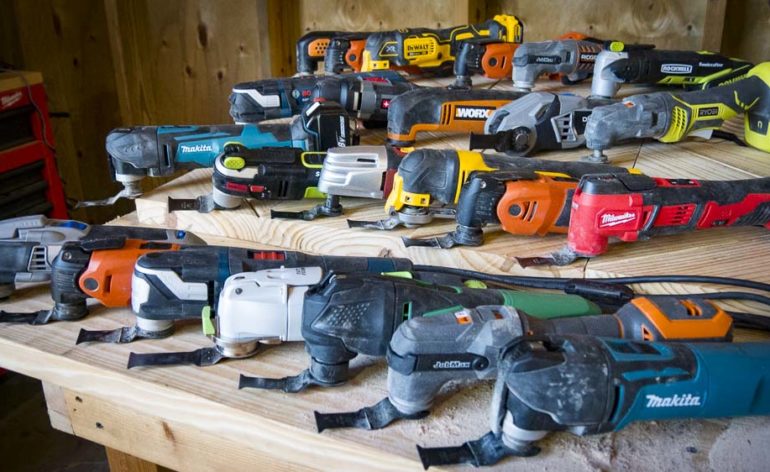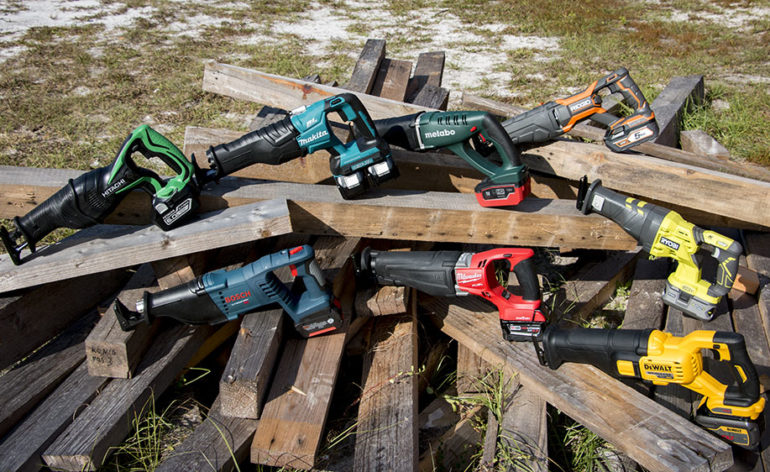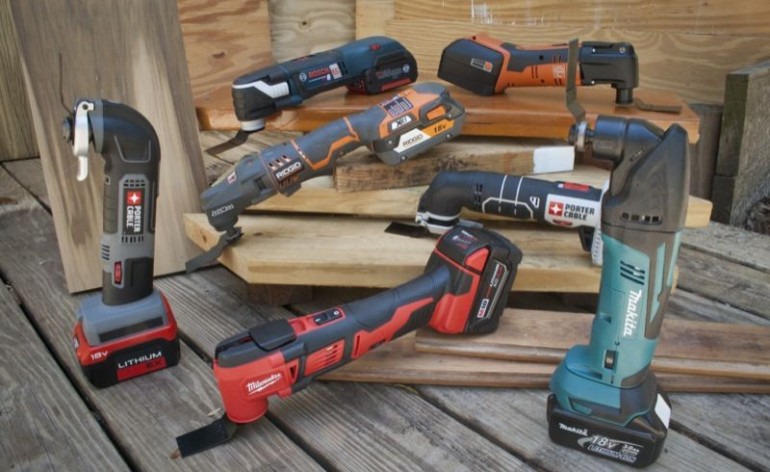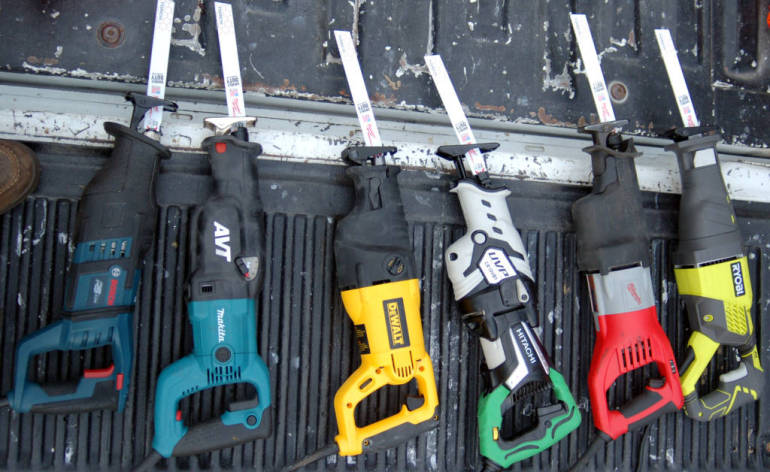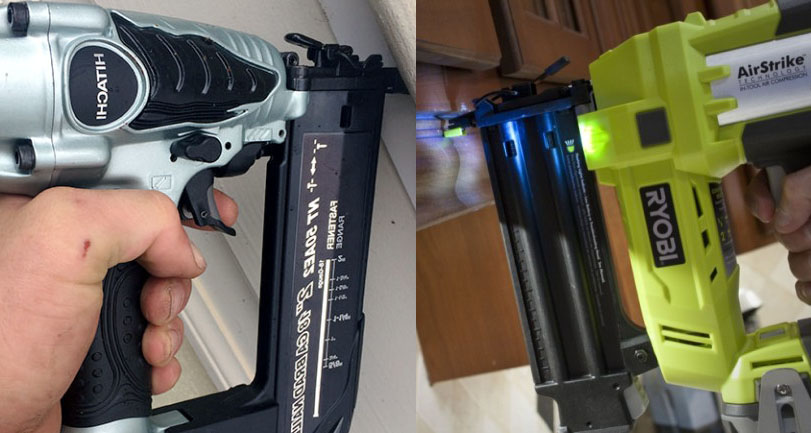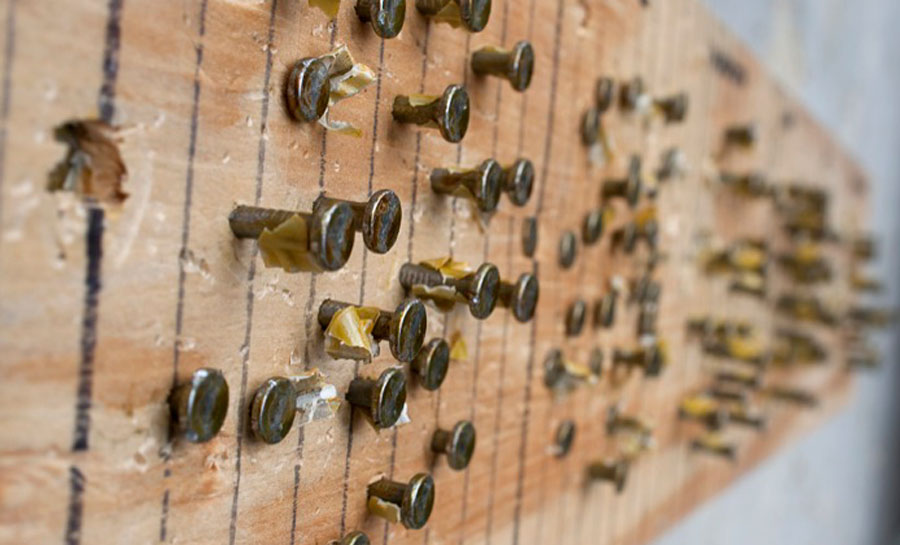ProToolReviews test drives over two dozen models to help you pick your next purchase
Oscillating tools, or oscillating multi-tools, are far from sexy. But they specialize in making the cuts that no other saw can do effectively – close undercuts, plunging flush cuts, and all manner of tight space work that other saws are just too brutal for.
They work by vibrating thousands of times per minute to create an effective sawing motion with its 2° – 3° (usually) oscillation angle. This gives it the unique ability to make a controlled cut with a relatively small footprint. So who makes the best oscillating tool?
We brought in 25 26 models to find out!
Editor’s Note 6/4/2018: Kobalt’s 24V Max oscillating tool was a late entry. The results have been updated to include its performance.
Oscillating tools have three primary roles: cutting, scraping, and sanding. The tool’s ability to scrape is directly tied to the same qualities that make it good or bad in cutting. Sanding is another story. While you can sand with a multi-tool, it’s not very good at it compared to using a Pro-level random orbit sander. If you need a quality finish, you’re likely looking elsewhere. For Pro purposes, we’re focusing on the cutting/scraping side of things.
Key Features
The feature set on an oscillating multi-tool is more limited than many of the power tools we test. For Pro use, we like to see a variable speed dial with an on/off switch rather than a trigger. If it does have a trigger, a lock on and lock off are essential.
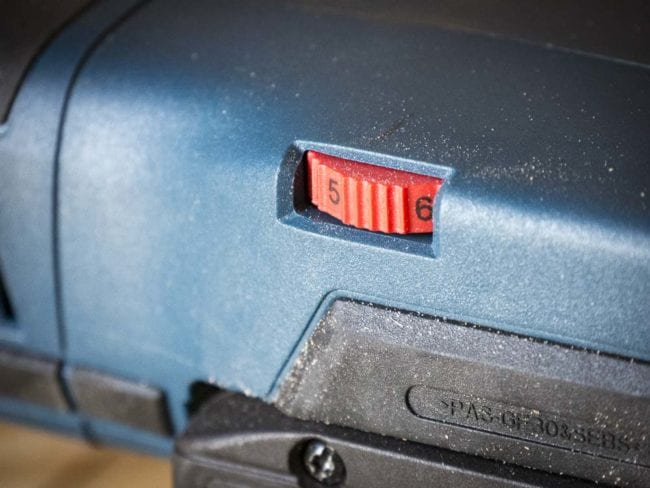
Ridgid, Ryobi, and DeWalt all lack a variable speed dial, though their triggers are variable speed. You can work with it, but our testing team is unanimous in their push for a simple switch. Ridgid and Ryobi lack lock-on switches for their triggers.
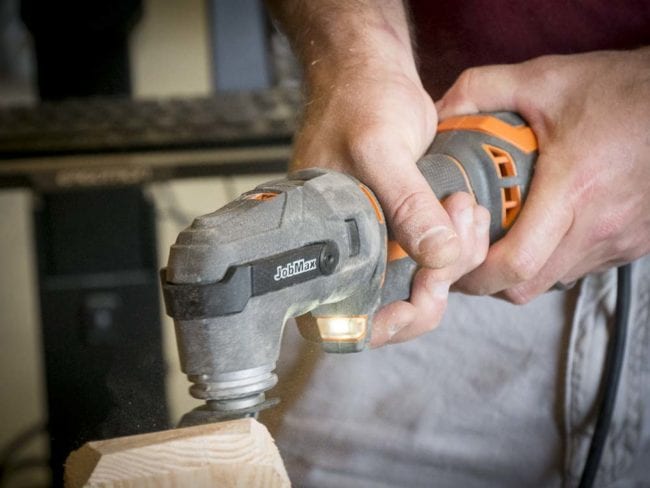
There are several areas where some models go beyond the basics. 10 of our models give you an LED light to work with. Ridgid and Ryobi have an interchangeable head system – JobMax and Job Plus, respectively. There are a variety of other conversions you can make like a jigsaw, right angle drill, and reciprocating saw. Ridgid takes it a step further with corded, 12V, 18V, and pneumatic power options.
Worx throws in a vacuum port on their 2.5-amp corded model while the Rockwell Sonicrafter corded model gives you the ability to change oscillation angle for more aggressive cutting. Porter-Cable includes a depth and control guide on their corded model.
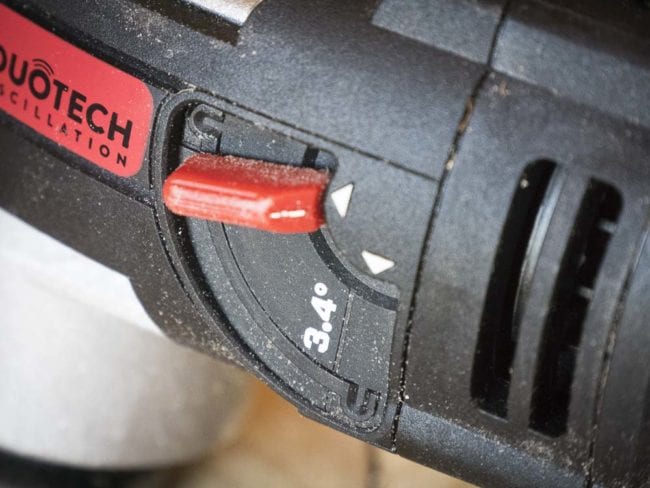
The Dremel Velocity looks very different from the rest of the group. It has a 90° rotated blade and drive system that allows it to make long cuts or scrapes.
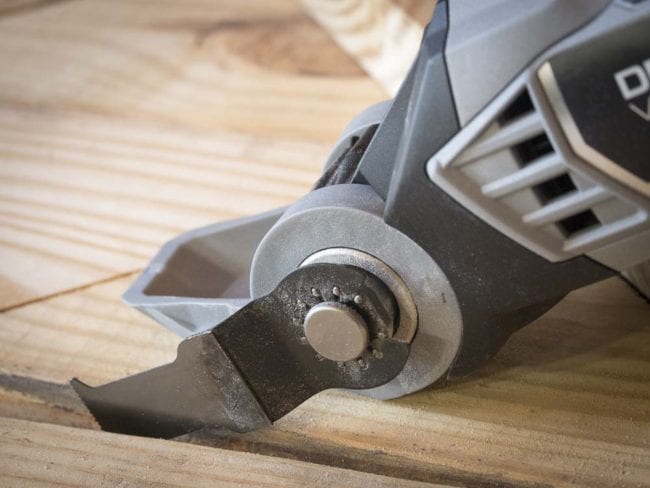
Ergonomics
The ergonomics of the best oscillating tool comes into play mainly through weight and handle design. Most of our models stick with the standard large diameter, rounded handle similar to a grinder. A few break the mold, however.
The two Ridgid models earn our admiration with having the best grip design with their handles and rubber overmold. Ryobi is right behind them with the DeWalt 20V Max oscillating tool taking a close 4th place. The Porter-Cable 20V Max model takes 5th to wrap up our favorites. The downside is that, aside from Porter-Cable, each of the top 5 trade switches for triggers to get the handle design.
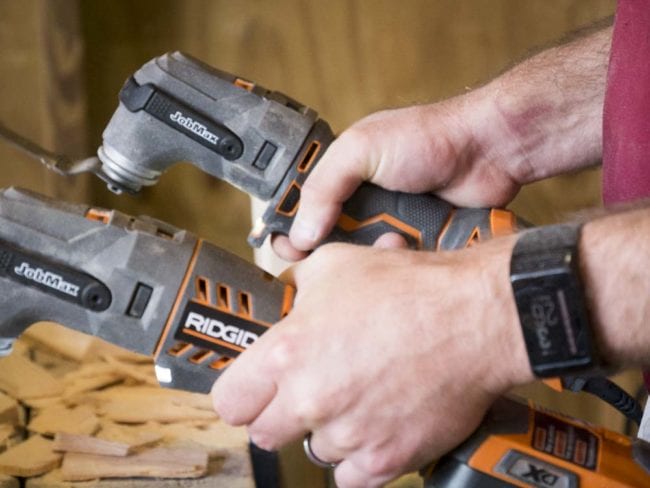
On the other end of the spectrum, Makita and Bosch leave room for improvement in the grips and handles of their cordless models. The Dremel Velocity is our least favorite with its comparatively massive bulk.
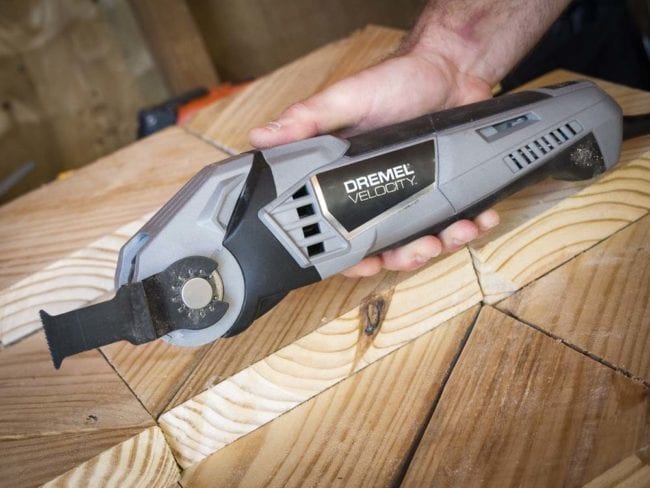
Weight becomes an interesting topic, especially since some of the cordless models come with compact batteries while other include extended capacity. The Porter-Cable 20V Max remains the lightest of all, weighing in at just 2.59 pounds. Harbor Freight’s Chicago Electric model is pretty close at 2.64 pounds, and the Worx cordless is right behind it at 2.65 pounds.
For the heavyweight division, Dremel’s Velocity (4.16 pounds), Festool’s Vecturo (4.3 pounds), and Bosch’s cordless powered by a Core18V battery (4.46 pounds) leave a gap to Makita’s 18V LXT with a 3.0 Ah battery at 4.99 pounds.
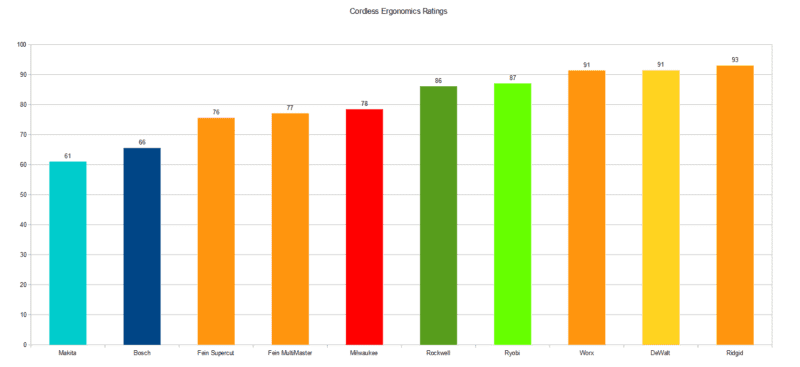
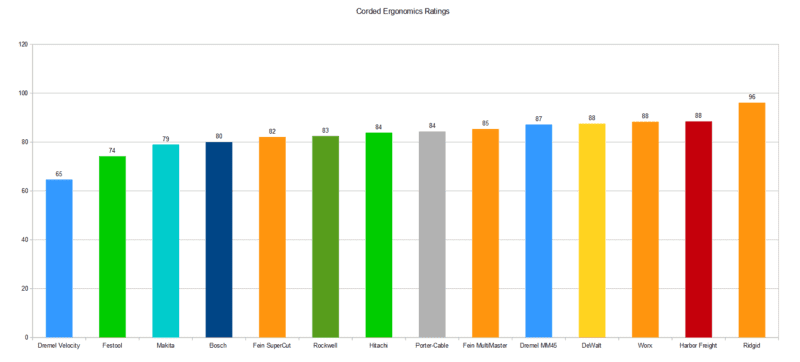 Editor’s Note: Kobalt 24V Max scores 83 points for ergonomics.
Editor’s Note: Kobalt 24V Max scores 83 points for ergonomics.
Blade Changes
Blade changes might not be a big deal if you’re a DIYer, but if you’re a Pro making a variety of cuts or if you just have a lot of cutting to do, blade changes can be a sigh of relief or a source of frustration.
Bosch and Fein both take advantage of Starlock technology. This completely hands-free blade change system quickly became our favorite. DeWalt and Porter-Cable also earn solid points for their clamping system. Ridgid take a couple of steps to make the change happen, but we like that they include magnets to hold the blade during the change.
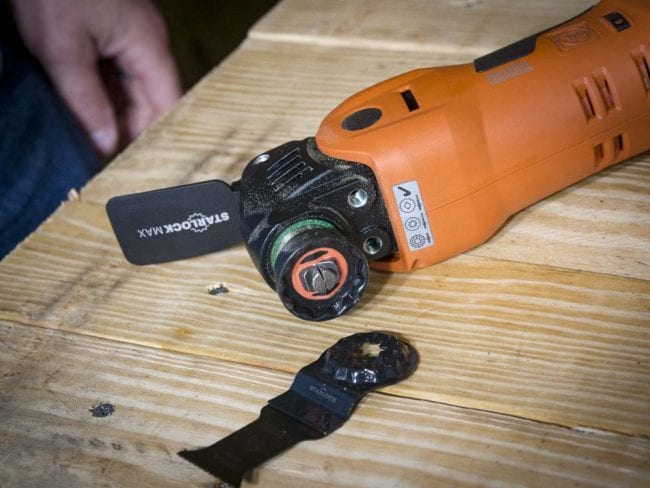
On the downside, Milwaukee uses a lever to release the lock on their bolt, but you also have to unscrew with your fingers. It’s possible to over-tighten it, requiring a slotted screwdriver to get it loose again.
Hitachi has an effective blade change system that’s simply over-engineered. You have a lever along with a pull-and-twist lock release before you can slide the bolt to remove or install a blade. It’s one step more than most of the group that makes us feel like we’re playing a game of Bop It.
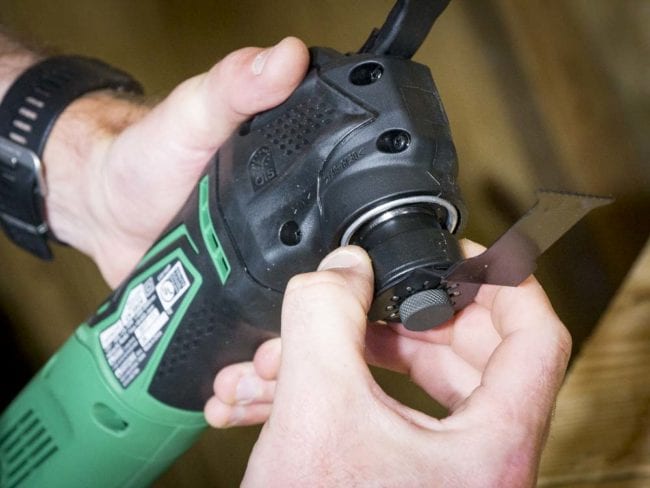
Both Worx models, Ryobi, and Harbor Freight require a hex wrench to change the blade – something our testing team hates.
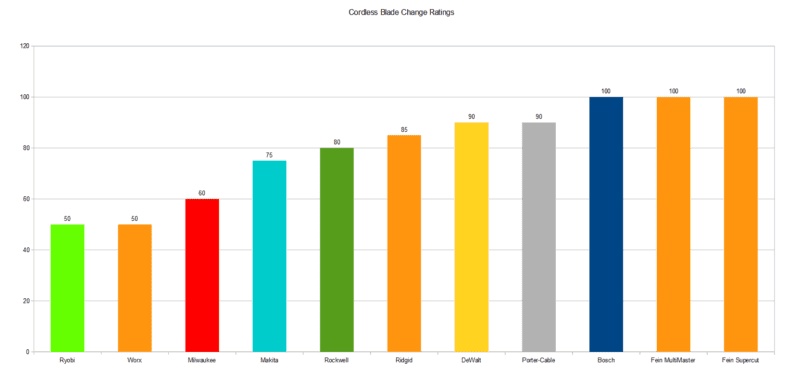
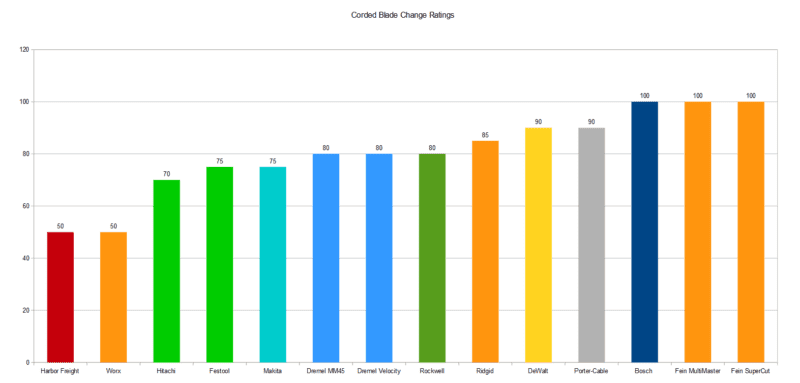
Editor’s Note: Kobalt 24V Max scores 80 points for blade change.
—This article by Kenny Koehler first appeared on ProToolReviews.com, which is chock full of tool reviews and info, in case you are interested.

